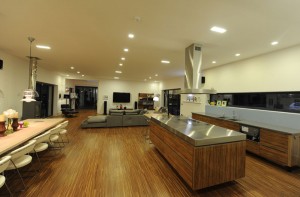Changing the world and your energy bill, one LED bulb at a time
Doing what is right for the environment is important to me and to most of you reading this blog. Like most people however, I am on a budget and must make smart fiscal decisions to run the household. One of the easiest and most effective ways to reduce your power bill is simply by upgrading to high efficiency lighting. Upgrading old incandescents to compact flourescents (CFL’s) is easy and inexpensive and is what most people are doing today. However, many people don’t like the lack of warmth of the light that is put out by CFL’s. Others complain about the the delay that it takes for the CFL’s to warm up or the potential problems with mercury if a CFL bulb is broken.
A terrific alternative to CFL’s is upgrading to high efficiency LED lighting. LED’s are still fairly expensive but the cost is going down and there are lots of upsides to LED’s that you should consider when ditching your old incandescents.
The reason why LED bulbs are effective is that they are constructed without some of the defects found in incandescent bulbs. For example, LED’s are constructed without a filament. This make them extremely durable and resistant to external factors such as extreme temperatures or movements like vibration. Additionally, LED’s produce very low heat which is ideal for recessed lighting in a home.
LED lighting (light emitting diode) uses a fraction of the energy of incandescents. Lumens is the measure of the amount of light and LED’s put out the most amount of light with the least amount of energy. This directly translates to savings on your power bill. For example, 40 watt incandescent bulbs can be upgraded to 6-9 watt LED bulbs dependant upon the lumens per bulb. A 60 watt incandescent can be upgraded to an 8-12 watt LED. Here is a link to a conversion table that shows the amount of watts and lumens per bulb for incandescents, CFL’s, and LED’s: http://eartheasy.com/live_led_bulbs_comparison.html
The average home is equipped with approximately 40 bulbs. To get an idea of your monthly home lighing cost, take a look at your power bill in the winter if you live in the southern United States. The monthly power bill without the cost of air conditioning is a primarily the cost to run the lighting in your home. We call this “electric baseload”. So if your power bill is $70 in winter in Atlanta, I’d estimate that $50 of that is the cost to run your lighting. Upgrading to incandescents to LED’s should reduce your montly lighting cost by approximately 85%. Given our example, that equates to $42.50/montly savings or $510/year.
Another important upside to LED lighting is the longevity of a single bulb. LED’s generally last 10 times longer than CFL’s and even longer than incandescents.



